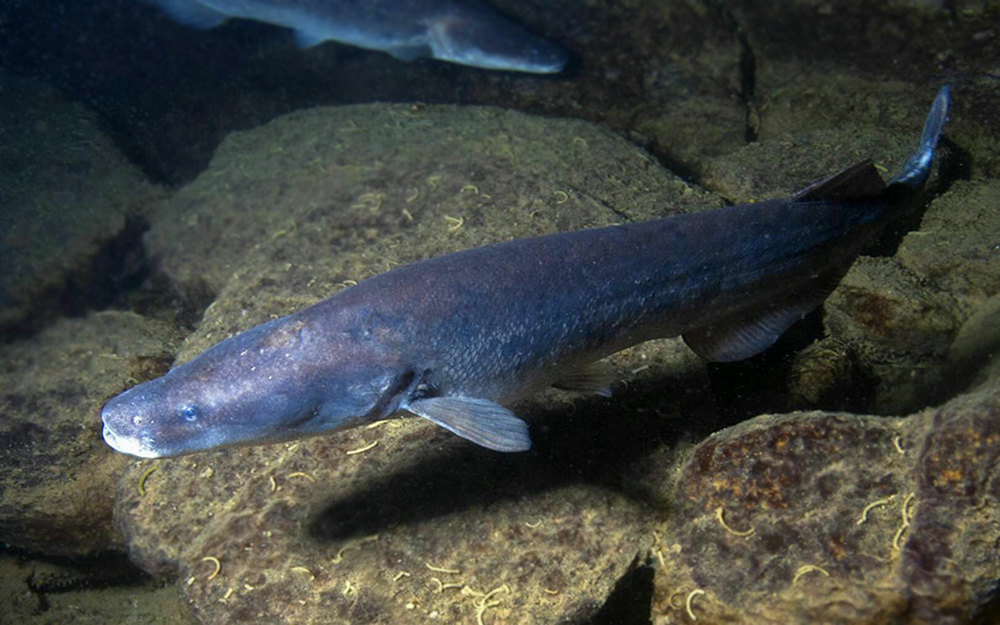Cornish jack
(Mormyrops anguilloides)

Classification
The Cornish jack, Mormyrops anguilloides, is a species of weakly electric fish in the family Mormyridae, native to quiet waters in much of Sub-Saharan Africa. The largest species in its family, the Cornish jack is a nocturnal group hunter of smaller fishes, using electricity to locate its prey and communicate with other members of its group. It is a commercial game fish valued for its size and taste.
The common name Cornish jack likely originated from European settlers, who thought that this fish resembled the European pike, whose young is known as a jack in some parts of England. It is also known as African carp, a name that is used for several other species.
Distribution and habitat
The Cornish jack occurs in the White Nile, the Lake Albert drainage basin, inland waters from Senegal to Chad, rivers in Cameroon, and small coastal basins in the Guinean zone. It is also widespread in the Congo River basin, Lakes Malawi and Tanganyika, the Volta River basin, the Shebelle River, and the Jubba River. In southern Africa, it is restricted to the middle and lower Zambezi, and the Buzi and Pungwe Rivers.
This demersal species is found in tropical freshwater habitats between 22 and 24 °C (72 and 75 °F). The juveniles are found in marginal habitats, while the adults prefer deep, quiet water between boulders and below overhangs, away from strong currents. They also occur beneath Salvinia mats and in river estuaries in Lake Kariba.
Description
The body and head of the Cornish jack are elongated; the head is nearly twice as long as high, smooth and depressed in front. The snout is rounded and almost as wide as the head. The mouth is terminal, with the upper jaw slightly longer than the lower, both bearing a single row of small, pointed teeth. The eyes are very small and placed in the front third of the head. The gill openings are small and inclined at an angle. The dorsal and anal fins are set well back on the body; the caudal fin is relatively small and forked with rounded lobes. There are 21–30 fin rays in the dorsal and 38–51 rays in the anal fin. The anal fin of the male differs from that of the female in having longer rays and a pronounced concavity in the anterior half.
The scales are small, numbering 85–100 in the lateral line. The coloration is gray above, lighter silvery white below, often with a bronze or yellow sheen. The juveniles are darker in color, being grayish blue or brown. The meristic characteristics of the body (such as the number of scales, fin rays, and vertebrae) vary by geographic location. The largest members of the family Mormyridae, Cornish jacks attain a maximum known length of 1.5 m and a weight of 15 kg.











